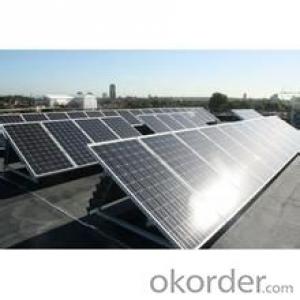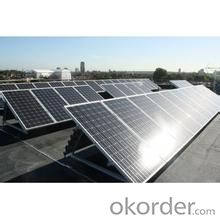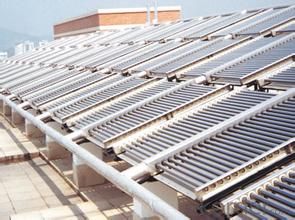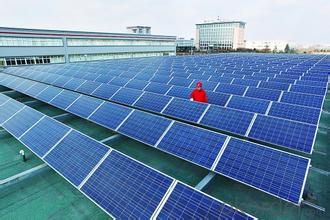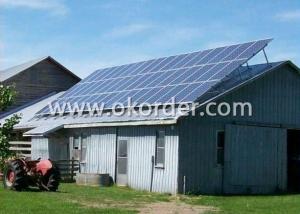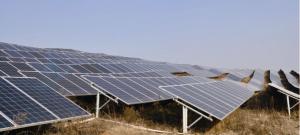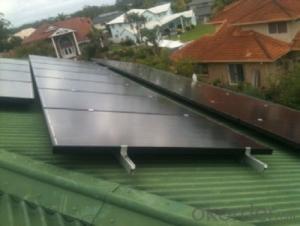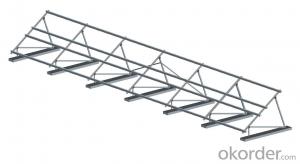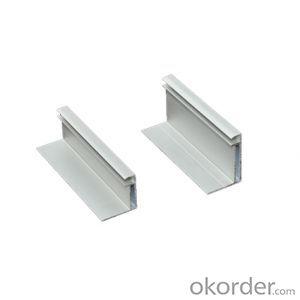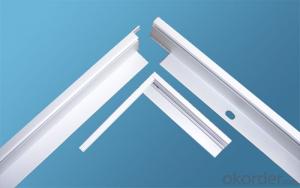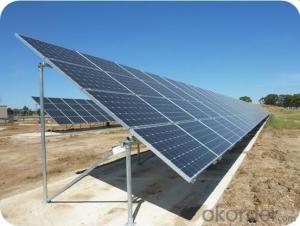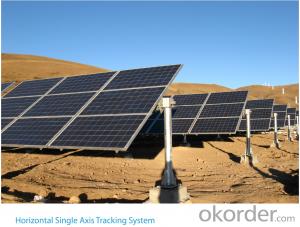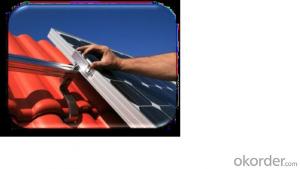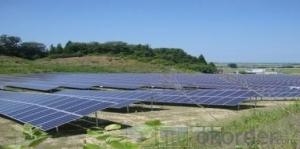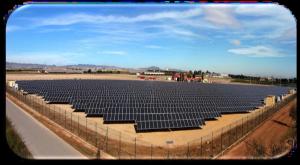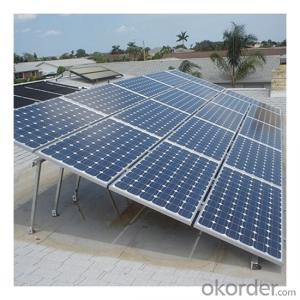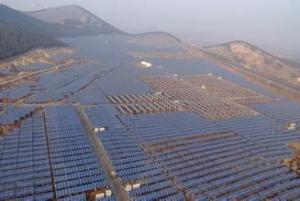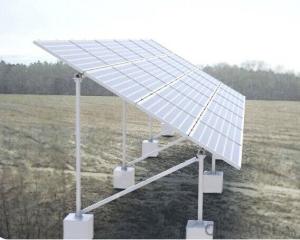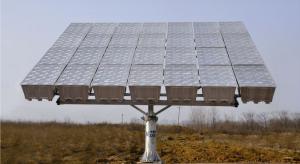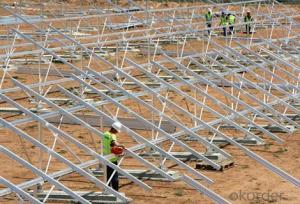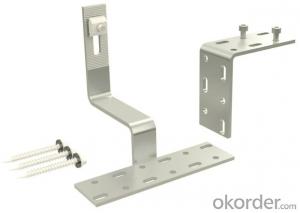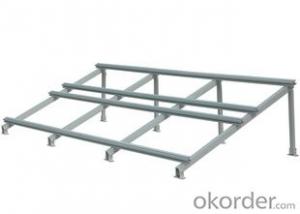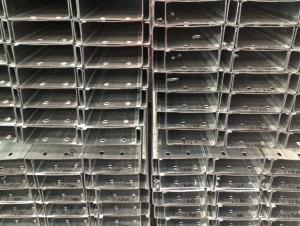Plane Roof System-2 Solar Mounting System China
- Loading Port:
- China Main Port
- Payment Terms:
- TT OR LC
- Min Order Qty:
- -
- Supply Capability:
- -
OKorder Service Pledge
OKorder Financial Service
You Might Also Like
Plane Roof System-2
Die umfassende Auswahl an unterschiedlichen Komponenten und Systemen ermöglicht es,
mit Schletter-Systemen nahezu jede Modulkonfiguration auf jedem Dach zu befestigen.
Durch unsere hochwertigen und durchdachten Komponenten erzielen Sie schnelle Montagezeiten und verlässliche Haltbarkeit mit statischem Nachweis.
Bei der Auswahl der für Ihr Dach am besten geeigneten Variante haben Sie die Wahl zwischen einer dachparallelen und einer aufgeständerten Lösung.
Leichte Aufständerung auf Trapezblech (5 - 7° Aufstellwinkel) für gerahmte Module
Konzipiert für gerahmte Module mit ca. 1,3 – 1,7 m Höhe in Hochkantmontage
Befestigung auf der U-konstruktion meist mittels Trapezblechschellen
Schnell und einfach zu montieren
Bessere Hinterlüftung
Bessere Selbstreinigung
Optimale Lastabtragung über die Dachhaut
Mehrertrag bei günstigem Systempreis
- Q: Can a solar mounting system be used in areas with high temperatures?
- Yes, a solar mounting system can be used in areas with high temperatures. However, it is important to consider the specific design and materials used in the mounting system to ensure its durability and performance under such conditions. High-temperature resistant materials and proper ventilation can help mitigate any potential issues caused by the heat, ensuring the system's efficiency and longevity.
- Q: Can a solar mounting system be used in areas with solar incentives for research institutions?
- Yes, a solar mounting system can certainly be used in areas with solar incentives for research institutions. In fact, research institutions can greatly benefit from installing solar panels and taking advantage of these incentives. By utilizing a solar mounting system, research institutions can generate renewable energy, reduce their carbon footprint, and potentially save on energy costs. Additionally, the incentives offered by the government or local authorities can help offset the initial investment and make the installation more financially feasible.
- Q: Can a solar mounting system be installed on a government or municipal building?
- Yes, a solar mounting system can be installed on a government or municipal building. Many government and municipal buildings across the world have already installed solar panels as part of their efforts to reduce carbon emissions and transition to renewable energy sources. These buildings provide ample roof space for solar panel installations, making them ideal candidates for solar mounting systems. Additionally, government and municipal buildings often have the resources and support necessary to undertake such projects, further facilitating the installation process.
- Q: Can a solar mounting system be installed on a boat or RV?
- Yes, a solar mounting system can be installed on a boat or RV. These systems are designed to be versatile and can be installed on various surfaces, including the roofs of boats and RVs. This allows for the generation of clean and renewable energy while on the move, making it a convenient and eco-friendly option for powering these vehicles.
- Q: Are solar mounting systems adjustable?
- Yes, solar mounting systems are adjustable. They are designed to be adjustable in order to optimize the angle and orientation of the solar panels for maximum sunlight exposure and energy generation.
- Q: Can a solar mounting system be used with solar-powered remote monitoring systems?
- Yes, a solar mounting system can be used with solar-powered remote monitoring systems. The solar mounting system provides a secure and stable platform to install solar panels, which generate power for the remote monitoring systems. This allows for uninterrupted monitoring and data collection in remote locations where traditional power sources may not be available.
- Q: Are there any specific requirements for water heater or thermal system integration when using a solar mounting system?
- Yes, there are specific requirements for water heater or thermal system integration when using a solar mounting system. The water heater or thermal system should be compatible with the solar mounting system and should be designed to efficiently utilize the solar energy captured by the system. It is important to ensure proper insulation and piping connections to prevent heat loss and maintain the efficiency of the thermal system. Additionally, the water heater or thermal system should have controls that can be integrated with the solar mounting system to optimize energy usage and ensure seamless operation.
- Q: Can a solar mounting system be used in areas with limited access to energy storage solutions?
- Yes, a solar mounting system can still be used in areas with limited access to energy storage solutions. While energy storage is beneficial for maximizing the use of solar energy, it is not a requirement for the functionality of a solar mounting system. Solar panels can still generate electricity during daylight hours, and any excess can be fed back into the grid or used immediately. Therefore, even without energy storage, a solar mounting system can provide a reliable and sustainable source of energy in areas with limited access to storage solutions.
- Q: Are there any specific requirements for wind deflectors when using a solar mounting system in windy areas?
- Yes, there are specific requirements for wind deflectors when using a solar mounting system in windy areas. Wind deflectors are typically designed to reduce wind loads on the solar panels and mounting system, ensuring their stability and preventing potential damage. These requirements may vary depending on the specific location and wind conditions, but generally, wind deflectors should be properly designed and installed to withstand high wind speeds, minimize aerodynamic drag, and maintain the structural integrity of the solar array.
- Q: What are the maintenance requirements for a solar mounting system?
- The maintenance requirements for a solar mounting system typically involve periodic inspections to ensure the structural integrity of the system, cleaning of the solar panels to maximize their efficiency, and monitoring of electrical connections and components for any signs of wear or damage. Additionally, it is important to regularly check the alignment and positioning of the panels to ensure optimal sun exposure.
Send your message to us
Plane Roof System-2 Solar Mounting System China
- Loading Port:
- China Main Port
- Payment Terms:
- TT OR LC
- Min Order Qty:
- -
- Supply Capability:
- -
OKorder Service Pledge
OKorder Financial Service
Similar products
Hot products
Hot Searches
Related keywords
